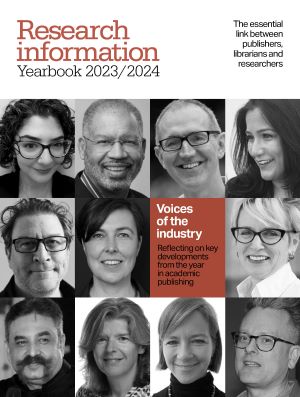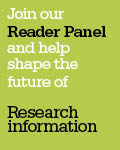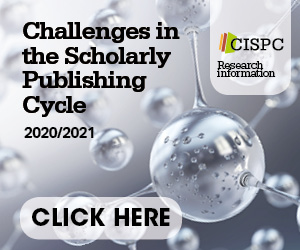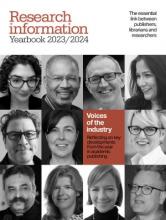Critical thinking in a post-Beall vacuum
It’s crucial that developing-country researchers are not forgotten, writes Andy Nobes
For many years, Jeffrey Beall single-handedly fought his own (often controversial) battle against ‘predatory’ publishers, mostly via his ‘Scholarly Open Access’ blog (AKA Beall’s List) – a battle he ultimately seemed to have lost when the blog was taken offline in mysterious circumstances in January.
Since then, the chit-chat in the scholarly community has been about what to do now that Beall’s List has gone. There has been talk of replacement ‘blacklists’ of publishers and journals, or that there should be more investment into ‘whitelists’ or other resources. Beall certainly had his critics, and some of them think his blog should be replaced with nothing at all – after all, they say, blacklists can act as a crutch for researchers who should already possess the skills and intelligence to tell a real journal from a fake one.
In the recent words of UK researcher and open-access advocate, Mike Taylor, on his blog: ‘I’m sorry if this is harsh, I have very little sympathy with anyone who is caught by a predatory journal. Why would you be so stupid? How can you expect to have a future as a researcher, if your critical thinking skills are that lame?’
I absolutely agree about the need for researchers to have good critical thinking skills but I think that this criticism is more harsh than fair. I commented on Mike’s blog, arguing from the perspective of those who are the most common victims of predatory journals, and frequent visitors to Beall’s List – researchers from the Global South; and also my own personal perspective as someone who works with these researchers. I have now adapted that response into the article you are now reading.
My organisation, INASP, is one of the founder members of the Think. Check. Submit. campaign, which guides researchers in using their own judgement to decide on the appropriate journal for their research. This is obviously a vital step in research communication and dissemination – a point that we make regularly on INASP’s AuthorAID online courses – that this should be considered at the beginning of the research project; not as an afterthought. So it makes sense to ask researchers to critically examine journals/publishers and decide for themselves whether they are the most suitable outlet for their work.
It is very easy for experienced publishing professionals or researchers to dismiss predatory journals as an amateurish scam, but I think sometimes we also need to bear in mind the majority of people involved in the academic world, who don’t spend most of their day thinking about the publishing industry and publishing ethics.
We may think it is ‘stupid’ to be fooled by predatory publishers, but as Phill Jones of Digital Science has already done a great job of pointing out, there is a significant ‘information inequality’ between researchers in the Global North and South, which should make us think twice before rushing to judgement.
Critical thinking and language
It can be argued that academic researchers, of all people, should already possess the critical awareness to tell good journals from bad. But I think there is a subtle difference between having a critical knowledge of the scientific method, and having the skills needed to judge the quality of academic journals – skills like digital literacy, and a decent understanding of the (constantly changing and for many, mysterious) landscape of scholarly publishing. An early-career researcher isn’t necessarily going to have the basic background knowledge to say ‘this journal looks a bit dodgy’ when they have never been taught what publishing best practice actually looks like. I am not sure it is useful to think of cognitive or critical thinking as a ‘transferable skill’ because you need some hard context and background knowledge of what you are trying to critically examine in the first place.
It is also important to remember that many researchers in the developing world still lack access to some/many academic journals in the first place. This means that their knowledge of the literature, (and therefore an understanding of their ideal target journals) can often be incomplete.
We also have to consider the language barrier. It is only fair, since we demand that the rest of the scientific world communicates in academic English. As a lucky native speaker, it takes me a few seconds to spot nonsense and filler text in a journal’s aims and scope, or a conference ‘about’ page, or a spammy ‘call for papers’ email. It also helps that I have experience of the formal conventions and style that are used for these types of communication. Imagine what it is like for a researcher with English as a basic second language, who is looking for a journal in which to publish their first research paper? They probably will not spot grammatical errors (the most obvious ‘red flag’) on a journal website, let alone the more subtle nuances of journal-speak.
How serious is the problem?
One of the reasons that INASP launched the AuthorAID project 10 years ago was because there are critical gaps in knowledge and skills for research communication: for example, not all institutions in the developing world have the capacity to include research-writing skills as part of their curriculum.
Over the last few years I have read quite a few CVs of mid-career and experienced developing-country researchers who have been applying to join one of our initiatives as a facilitator or a mentor.
We have some superb mentors from Latin America, Africa and Asia, but it’s quite surprising how often, when looking through the application of a well-qualified researcher, that predatory journals unexpectedly appear on their CV. Sometimes there might be two, three or even four or more journals that appear(ed) on Beall’s List – and this is from researchers who want to support and advise younger researchers, which is a bit worrying.
To quote one African researcher in the AuthorAID network: ‘This is a serious problem and the institutions are doing absolutely nothing to give the necessary support on how to find journals and get papers published in reputable journals. I know some universities discourage their staff by using it as a criteria for promotion not to publish in these journals. But so many more are not even aware; my institution, for example, does not do that, lecturers still publish in any journal.’– an anonymous, WhatsApp discussion.
Of course, some researchers may be knowingly submitting to predatory journals but I believe these researchers are in the minority; most are genuinely fooled or unaware that there is a problem.
There is a larger discussion around the role of institutional promotion committees and how they can develop more stringent criteria for research output – but I don’t have the space to cover that here.
According to another researcher: ‘My institution tried grading us into our different academic rank and one of the criteria was publication. No one checked if the journals presented were predatory journals or not. It was a case of publish or you perish. It was an AuthorAID online course that enlightened me. In fact, I regret some work I sent to journals but my institution still accepts them for now.’
Of course, we hope (even assume) that tutors and supervisors can provide some basic guidance to their students on how to choose a target journal, but one of the common themes I’ve heard from researchers is that their supervisors and tutors tend to be very much in the ‘old school’ or ‘traditional’ mould of academic, with very limited understanding of digital publishing. Online and open access publishing is often badly misunderstood – even at the highest levels. Note, for example, the decision in 2015 of the Medical Council of India to refuse to recognise publications in ‘e-journals’ (without a print version) when counting publications for promotion.
Researchers also sometimes tell us that they feel unsupported by their senior researchers and staff.
Beall’s List – good or bad?
Beall’s List was highly flawed – it captured the main players in the predatory journal industry quite well but Beall was clearly struggling to keep up with some of the new arrivals on the scene, and I think he was too harsh on some genuine but low-quality regional publishers which deserved the benefit of the doubt and yet were never re-assessed. Some entries on the list were documented and well-justified, while others had no explanation or background, and the reason for their inclusion was not obvious or transparent.
As one of my Latin American colleagues told me recently, Beall’s List was useful to lots of researchers as a first reference-point, but it wasn’t the only resource they checked, and people were becoming more and more aware of the flaws of the project (and Beall’s agenda). Personally, I found the blog quite useful, because he pointed out the obvious flaws of individual cases, and so I didn’t need to do any additional delving and had an explanatory link to provide to researchers.
Similarly, I suspect that it was also useful for researchers to give them a grasp of some of the examples of poor practices and red flags they should look out for.
Problems for legitimate local journals
The rise of predatory journals has also caused problems for legitimate local journals that provide an important outlet for a lot of developing-country research. These journals are sometimes viewed as less trustworthy as a result of the predatory journal boom, especially as they tend to be open access and some charge small APCs.
It’s often interesting to see the websites that small local journals set up themselves to market their journal to the rest of the world. INASP has helped support the creation of national portals for journals in countries like Bangladesh, Sri Lanka and Nepal (not to mention the continent-wide portal African Journals Online). These portals host journals using the Open Journals System OJS software, but some journals also create their own additional website to promote the journal.
I know one good-quality journal which was one of the first in its country to get the ‘Green Tick’ on DOAJ. I’ve met the editor who is a keen open access and CC-BY advocate. However, the first iteration of the journal’s website and new journal cover was a real shock. It had all the things we might expect on a predatory journal website: 1990s-style flashy graphics, too many poorly-resized pictures, and the homepage (and journal cover) plastered with logos of every conceivable indexing service they had an association with (including Crossref and Google, for example). I knew this was a good journal, but the website was simply not credible, so we strongly advised them to clean up the site to avoid the journal being mistaken for predatory.
This felt wrong (and somewhat neo-colonial). ‘Professional’ website design as we know it is expensive, and what is wrong with creating a website that appeals to your target audience, in the style they are familiar with? In the country that this journal is from, a splash of colour and flashing lights are used often in daily life, especially when marketing a product. I think we need to bear in mind that users from the Global South can sometimes have quite different experiences and expectations of ‘credibility’ on the internet, both as creators and users of content and, of course, as consumers looking for a service.
What now, post-Beall?
As we might have expected, the last couple of weeks since Beall’s List’s disappearance has seen an increase in questions on the AuthorAID discussion list regarding predatory journals and conferences. These discussions generally start with: ‘Is x a predatory journal?’
Sometimes people find out the answer to this question too late. For example, there was a recent post on the discussion list from a researcher who accidentally submitted to a predatory journal on the basis that his tutor had published there, and he wants to know if he can withdraw the paper. If you want to get a feel for the kind of issues that are being discussed, feel free to register at https://dgroups.org/groups/authoraiddiscussion. You can just read posts, or you can join in with advice if you feel it would be appropriate.
Developing-country researchers, at all levels, still need training and support on good publishing practices, so that they can apply their critical faculties based on up-to-date information. This includes resources like Think. Check. Submit., but I’m sure there is room for more educational initiatives. For example, there could be further guidance on how to critically examine a website, spotting bad publishing practices, or just more up-to-date information on the world of academic publishing, but in plain language (and not just in English, of course).
Librarians also have a role to play. There is plenty of evidence that the first go-to source for academic information for developing-country researchers is Google.
Google ends up being a prime marketplace for predatory journals (equality isn’t always a good thing). Building researchers’ information literacy skills is something that librarians could help with, but may lack the capacity and resources to do so. Some training resources from previous INASP workshops may help (www.inasp.info/en/training-resources/courses/118 and www.inasp.info/en/training-resources/courses/127).
Finally, we regularly hear that academic mentors are in short supply in the developing world. If you feel that you could provide early-career researchers with help and advice on navigating the publishing process, and how to find a good journal, why not sign up as an AuthorAID mentor? (www.authoraid.info/en/mentoring)
I’ll leave you with a quote* from one of our experienced mentors in Tanzania, who sums up the problem quite well: ‘People are tempted to go with predatory journals: 1) Because these journals are published quite quickly – in a matter of a week or two your paper is out; and 2) It’s an easy way of getting promoted. If your paper has been rejected multiple times from other journals and then you see a journal that is ready to publish your work almost instantly, many people will fall for that.
’Therefore, I would advise scientists and researchers to please do a background check on all the journals that approach you or the ones you search online… Consult your mentors and other researchers to be sure of what you are doing.’
* This quote is part of an interview with mentor Ismael Kimirei which will appear on the AuthorAID website in the coming months.
Andy Nobes is programme officer, research development and support, at INASP






